Early diagnosis with MRI many diseases, in particular, it concerns the kidneys and urinary tract. In the conditions of hospitals, this examination is free of charge and is included in the examination standards.
In outpatient settings, the procedure is less accessible and is done on a paid basis. Its prices can be quite high, which, however, should not be a reason to ignore it.
Record content:
- 1 What is diagnostics
- 2 What the scan shows
- 3 Benefits of MRI
- 4 Indications for the procedure
- 5 Contraindications
- 6 Preparing for the procedure
- 7 Diet before kidney MRI
- 8 How is an MRI of the kidneys done?
- 9 MRI of renal vessels
- 10 Diagnosis of MRI kidney with contrast
- 11 Abdominal MRI
- 12 Survey result
- 13 Where to make and what the cost depends on
- 14 Kidney MRI video
What is diagnostics
MRI of the kidneys and urinary tract, the price of which in public health is determined based on objective indicators and standards is often the only way to detect dangerous pathology. MRI (magnetic resonance imaging) is one of the most informative diagnostic techniques.
It provides opportunities for detailed examination of tissues and organs. MRI does not involve interference with the body. It allows for detailed visualization of deep tissue. The quality of the images can be compared with detailed photos of sections of organs. MRI is prescribed for all categories of patients, regardless of age.
The technique is based on the principle of nuclear magnetic resonance. With it, individual atomic nuclei, which are in the area of \ u200b \ u200bthe magnetic field, absorb electromagnetic pulses. The tomograph converts these pulses into special signals. These signals are converted into a high-quality, high-contrast image.
Tomographs operate on protons, which are part of water molecules, and almost 70% of the human body consists of it.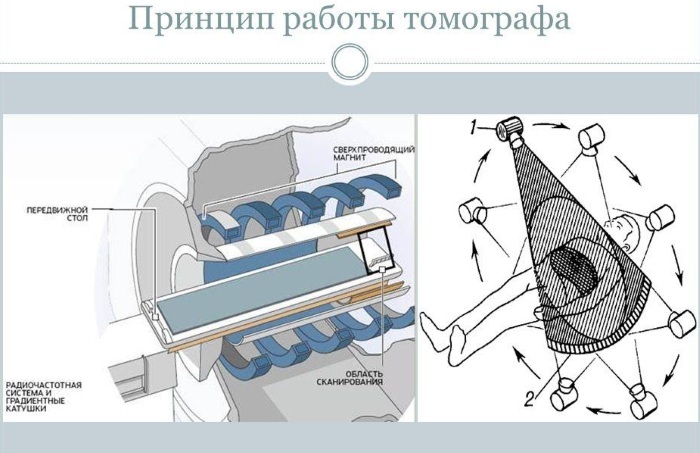
In different organs, the amount of water is different, and during the MRI scan, the tissues under investigation emit an unequal number of signals of varying strength. All these changes are recorded by the computer and displayed on the screen. Thus, the doctor receives a detailed contrast image of the internal organs.
Magnetic resonance imaging allows for accurate and detailed visualization of soft tissue. Doctors receive images that are almost impossible to achieve with other diagnostic methods.
Devices for this type of diagnostics are in the form of a hollow tube with a large diameter. It is nothing more than a huge magnet interacting with the protons of water molecules in the human body. Despite the fact that a strong magnetic field is emitted during the operation of the tomograph, it is not harmful.
In order to obtain clearer images during the examination, a special contrast agent is assigned to the person. This technique is called MRI with contrast. The drug introduced into the body is completely safe for humans. It does not pose any threat to it, because it is quickly excreted and does not cause allergies.
What the scan shows
MRI of the kidneys and urinary tract, the price of which fluctuates depending on the use of a contrast agent, allows you to diagnose a number of diseases, the detection of which by other means causes significant difficulties.
Tomography shows:
- cysts;
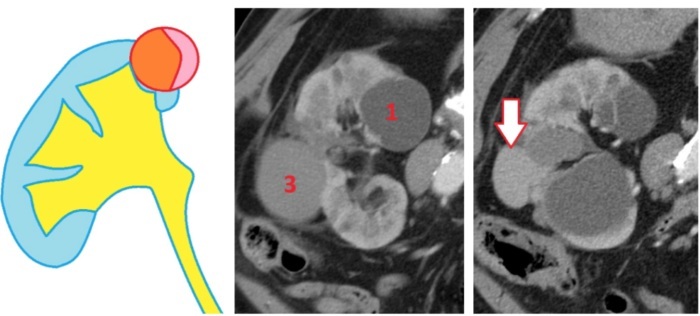
- calculi in the kidneys and urinary tract;
- benign and malignant tumors;
- volumetric formations of non-neoplastic origin;
- inflammatory processes;
- pathological conditions of the urinary tract;
- expansion of the renal pelvis - hydronephrosis;
- purulent phenomena in the tissue of the organ;
- abnormal structure of the kidney;
- violation of the blood supply to the kidney.
Benefits of MRI
Magnetic resonance imaging has the following advantages.
- More detailed visualization of the examined tissues. Ultrasound examination does not provide such detailed images.
- Compared to ultrasound, it is carried out in the absence of preparatory measures.
- Does not give a radiological load on the body of the subject.
- The doctor can get an increased contrasting detail of organs and tissues.
- The examination technique is not invasive and does not pose a danger to humans.
- Compared to ultrasound, MRI provides more valuable information for the most accurate diagnosis.

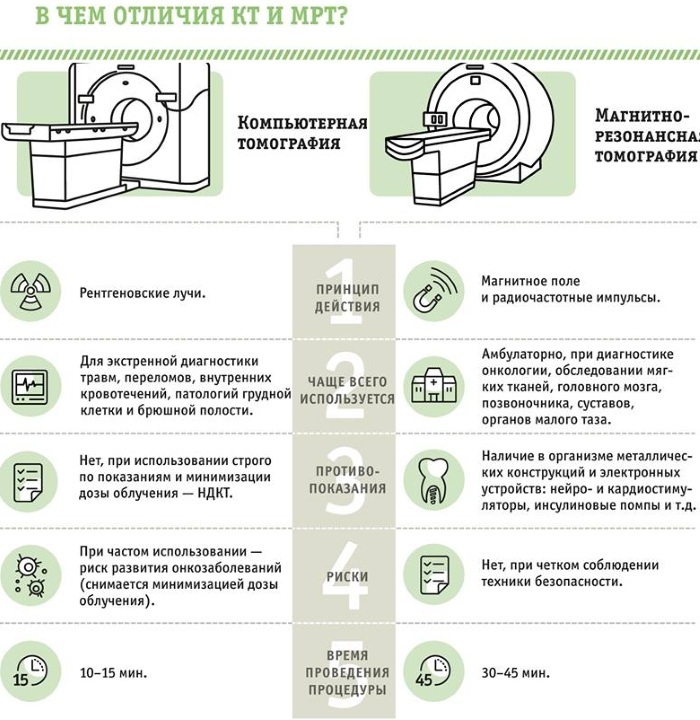
Thus, magnetic resonance imaging is the best alternative to ultrasound or computed tomography of the kidneys and urinary tract. There are no safer research methods that would give an even more detailed image of body tissues.
Indications for the procedure
MRI of the kidneys and urinary tract is prescribed for people with:
- the presence of pain in the lumbar region;
- swelling;
- urolithiasis;
- violation of urination;
- a constant feeling of thirst;
- frequent headaches and dizziness;
- tremors and fever;
- chronic fatigue, desire to eat salty foods;
- increased body pigmentation;
- the phenomena of hypertension;
- with altered urine tests;
- hematuria (the presence of blood in the urine);
- inflammatory processes;
- increased specific gravity of urine;
- a sharp violation of the blood supply to the kidney;
- blockage of the urinary tract;
- disorders of kidney function;
- congenital diseases of the excretory organs;
- the presence of cysts;
- symptomatology of tumors of the excretory organs;
- possible pheochromocytoma;
- metastases in the kidneys;
- a contraindication to X-ray diagnostics.
In addition, MRI of the kidneys is used for monitoring after surgery and for tracking the dynamics of the growth of tumors or cysts.
Contraindications
MRI is not acceptable for people with:
- implants made of metal;
- built-in neurostimulators;
- vascular clips;
- artificial heart valves;
- fixed dentures;
- shrapnel from gunshot injuries.
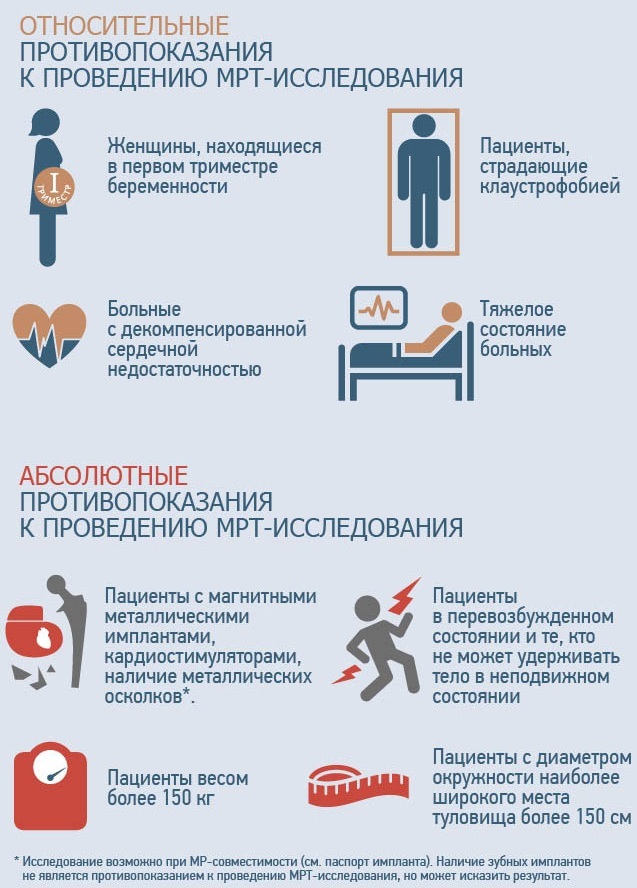
Sometimes this method of diagnosis can be denied to persons suffering from certain mental pathologies and claustrophobia (fear of a closed room). With this phobia, it is allowed to undergo an examination on an open-type tomograph.
Diagnostics for patients with:
- bronchial asthma;
- pathologies of the cardiovascular system;
- severe dehydration of the body.
Additional contraindications:
- taking medications that contain beta-blockers;
- intoxication as a result of the use of alcoholic beverages and drugs;
- lack of renal excretory function;
- pregnancy in the first trimester.
Preparing for the procedure
Preparation for tomography of the kidneys does not imply any special steps.
The patient should follow these recommendations:
- A few hours (2 - 3) before the procedure, you need to refrain from drinking and eating.
- Do not take medication. If this is not possible, then it is necessary to warn the doctor.
- It is necessary to wear linen made of natural fabric.
- Women are not allowed to use cosmetics on the day of the procedure.
- Before the procedure, you need to take off all jewelry, watches and even hairpins.
- The hearing aid and dentures must be removed. It is recommended to remove the wig.

If only the bladder is supposed to be examined, then a few hours before the examination it is important refrain from urinating, as the bladder must be complete.
It is also necessary to bring any medical documents that the doctor may need, especially the results of previous studies. It is necessary to inform the doctor about the fear of a confined space, if such, of course, exists.
Diet before kidney MRI
No special diet is required before MRI of the kidneys. The day before the examination, you should refuse fermented milk products, carbonated drinks.
On the eve, it is advisable to refuse:
- legumes;
- all types of cabbage;
- Luke;
- artichokes;
- mushrooms;
- all cereals, except for rice;
- grapes;
- pears;
- apples;
- peaches;
- earthen pear.
How is an MRI of the kidneys done?
The price for an MRI procedure may differ depending on what type of tomograph is used and whether a contrast agent is used during the diagnosis. The duration of the scan of the kidneys and urinary tract varies within half an hour.
The stages of the procedure are as follows:
- Before the examination, the patient removes all metal products, as well as the hearing aid.
- If a scan is performed using a contrast agent, then it is injected intravenously before starting this procedure.
- The patient lies down on a special table, which is placed inside the tomograph. It is recommended to calm down and be in a stationary position, otherwise the pictures will be of poor quality.
- Then the table is placed inside the tomograph. Communication with the doctor takes place using the built-in microphone. Since the tomograph makes rather unpleasant sounds during operation, the patient is offered to use earplugs or headphones.
- If it is necessary to do an MRI of the kidneys for children, the doctor applies a short-term anesthesia. This is due to the fact that the procedure requires a long stay of the patient in a stationary position. The child can ignore this requirement, especially when loud sounds are heard from the tomograph.
MRI of renal vessels
For the purpose of a detailed examination of the vessels of the kidneys, the use of a contrast agent is provided. It enhances the visualization of all cells. As a result, it is possible to obtain a detailed high-contrast image of the renal vessels. The clarity of the image will depend on the rate of blood circulation in the body.
MRI allows you to determine the location of the affected vessel, the place of its narrowing or blockage. Subsequently, this facilitates diagnosis and further treatment.
MRI of renal vessels is often prescribed to diagnose arterial hypertension. In view of the fact that this disease often leads to pathological changes in the renal vessels, it is advisable to examine this part of the circulatory system in detail.
MRI of renal vessels shows:
- aneurysms, that is, enlargement of veins or arteries;
- fistulas or fistulas between arteries and veins;
- blood clots in the lumen of blood vessels;
- constriction of the renal vessels (renal stenosis;
- the presence of benign or malignant tumors;
- bleeding from the kidney.
This examination is necessary to examine the body of the donor and recipient before kidney transplantation.
Contraindications to MRI of renal vessels are:
- pregnancy;
- severe renal impairment;
- renal failure.
Diagnosis of MRI kidney with contrast
Sometimes it becomes necessary to use a special contrast agent. It is injected into the bloodstream by intravenous injection just before the procedure. The substance stains the areas of the body being examined, and the doctor can see them better.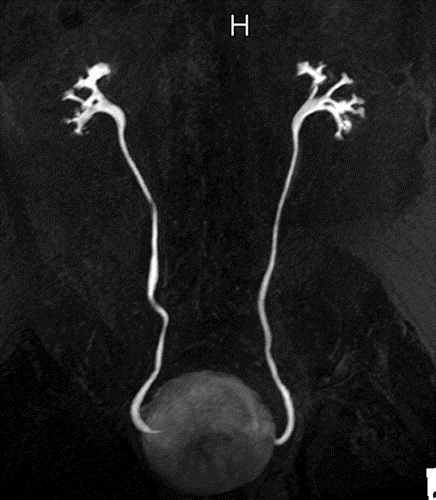
MRI of the kidneys and urinary tract, the price of which will be slightly higher when using contrast, it is used if there is a suspicion of the development of cysts and tumors, as well as bleeding, inflammatory processes. The information content of this survey method is very high.
Contrast with MRI is used only in the presence of serious indications. Pregnant and lactating women do not use contrast with magnetic resonance imaging. The contrast agent can adversely affect the development of the baby or pass into breast milk.
Before the administration of the contrast agent, the patient is tested for an allergic reaction. The drinking regime is adjusted accordingly.
Abdominal MRI
This study allows you to assess the condition of the internal organs, blood vessels, nerves and lymph nodes of the abdominal cavity. It also makes it possible to examine in detail the state of the retroperitoneal space.
MRI of the abdominal cavity makes it possible to detect and confirm diseases that cannot be detected by traditional diagnostic methods. The use of a contrast agent avoids some invasive diagnostic methods (for example, biopsy or laparoscopy).
This survey provides information about the condition:
- liver (its structure, the presence of neoplasms or pathological accumulation of fluid in the perihepatic space);
- gallbladder and bile ducts;
- pancreas;
- spleen;
- kidney and adrenal glands;
- intestines;
- stomach;
- abdominal lymph nodes, blood vessels and nerves.
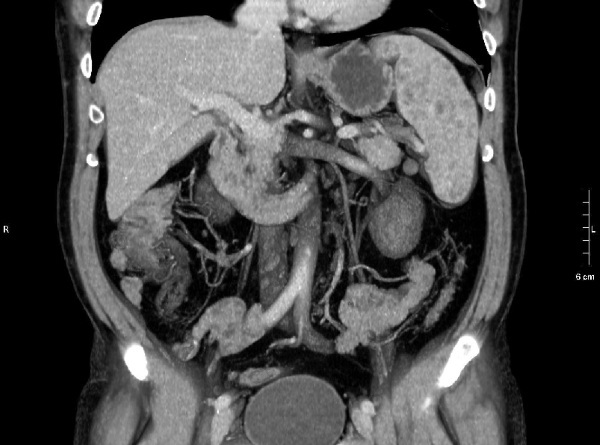
This diagnosis is not informative when examining the glandular layer of the stomach, the presence of stones in the gallbladder and determining the presence of tumors in the intestinal wall.
An abdominal MRI scan reveals:
- dystrophy or cirrhosis of the liver;
- hepatic cysts of a different nature;
- benign or malignant tumors;
- dystrophic processes of the abdominal organs;
- accumulation of effusion in the peritoneum or retroperitoneal space;
- injury to the liver or spleen.

Indications for such a survey:
- abdominal trauma;
- suspicion of the presence of tumors;
- enlargement of the liver;
- chronic abdominal pain;
- study of the dynamics of the development of the tumor process.
This examination is done on an empty stomach only. The intestines filled with digestive and feces create distortion in the image.
It is necessary to fulfill the following requirements:
- Eliminate from the diet all foods that contribute to the increased formation of gas.
- 6 hours before the MRI, you must completely stop eating.
- If the patient has constipation, he needs to do an enema.
Survey result
The scan results are issued to the patient the next day. He cannot independently figure out the survey data, because this requires special knowledge.
Normally, both kidneys are of normal size and position. The thickness and structure of the renal parenchyma are not changed. The calyx-pelvic system, urinary ducts have no peculiarities. There are no signs of obstruction. There are no enlarged lymph nodes.
The MRI results show:
- abscess (accumulation of pus in organs or tissues);
- aneurysm of the artery (expansion of the lumen of the vessel);
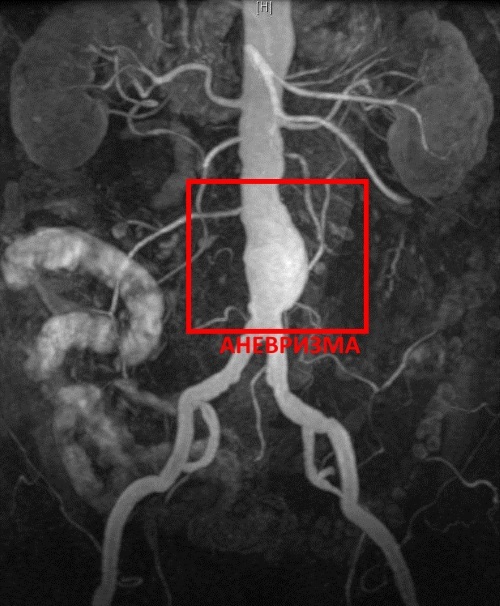
- hydronephrotic sac (expansion of the renal calyx and pelvis, diagnosed at the last stage of hydronephrosis);
- degenerative changes;
- violation of innervation;
- a site of pathological density (the presence of an atypical compaction indicates the development of the disease).
Where to make and what the cost depends on
MRI of the kidneys and urinary tract, the price of which is different in each city and clinic, is associated with financial costs. Many factors affect the cost. First of all, this is the use of a contrast agent. Another equally important factor is the prestige of the clinic.
A longer procedure (with certain indications) will also cost more. Compared to other methods of kidney examination, this is a rather expensive examination. However, its information content is much higher than that of other diagnostic methods.
Magnetic resonance imaging of the kidneys can be done in polyclinics, therapeutic and urological departments of hospitals, oncological dispensaries, diagnostic centers. This service is also available in any private clinic. The cost of the examination can be much higher in private diagnostic centers and clinics.
The approximate prices for this examination in different cities of Russia are as follows:
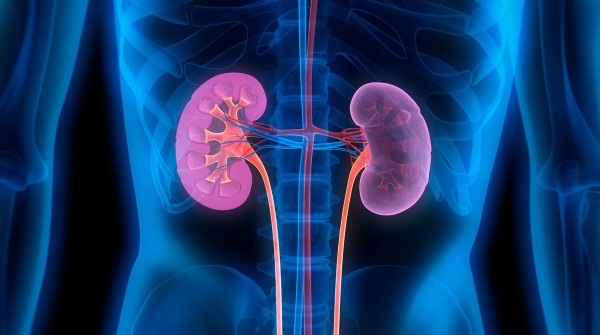
| Region | Price, rub.) |
| Moscow | 3200-9500 |
| St. Petersburg | 3600-9500 |
| Chelyabinsk | 3000-9000 |
| Ekaterinburg | 2700-8800 |
| Novosibirsk | 2800-7700 |
| Vladivostok | 2800-8000 |
Such a method of examination as MRI is a modern highly effective method for diagnosing diseases of the kidneys and urinary tract.
The magnetic field used during diagnostics does not have a harmful effect on the human body. Although the cost of the examination is quite high, it is impossible to refuse this examination. It allows you to detect a dangerous disease in time and start effective treatment.
Kidney MRI video
About MRI of the kidneys:


